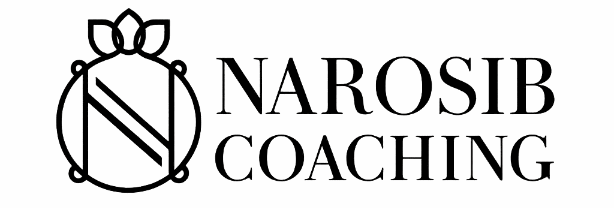
How to Be More Innovative at Work: Why Culture Matters
“Everyone wants to know how to be more innovative at work, but we don’t tolerate failure—how does that work?”
In today’s corporate world, “creativity” and “innovation” are plastered across mission statements. You’ll find them as part of KPIs, team slogans, and even office murals. But when people actually try to think differently, what do they find? Micromanagement, risk aversion, and a crushing load of process.
So, do companies really value innovation—or is it just another corporate buzzword?
In Episode 8 of The Heart of the Equation, I sat down with Anisa Zafar to talk about the tension between innovation and workplace reality. We explored why so many professionals feel blocked creatively—and what can shift when we stop waiting for permission.
Table of Contents
What’s at Stake: Innovation Theater vs. True Ownership
It’s one thing to say you value innovation. It’s another to create a culture where new thinking is genuinely welcomed.
Too often, “innovation” becomes a performance:
- Leaders say they want fresh thinking but punish failure.
- Teams are overloaded and under-resourced—creativity needs space.
- Processes become so rigid that deviation feels dangerous.
This isn’t just frustrating. It’s demoralizing. Over time, teams stop bringing ideas forward altogether. And the ones who care the most? They either burn out—or leave.
What Innovation Really Requires (It’s Not Ping Pong Tables)
As this HBR article notes, innovation isn’t about personality or job title. It’s about psychological safety, collaborative thinking, and a willingness to experiment—even when outcomes aren’t guaranteed.
Here’s what helps innovation thrive in real teams:
- Relaxed focus: Creativity needs breathing room. Stress and urgency shut down ideation.
- Room for error: If mistakes are met with blame or scrutiny, no one’s taking risks.
- Autonomy: Ideas can’t flourish if every decision must be approved by five layers of management.
As we shared in the episode: the more pressured you feel to be creative, the more your ideas dry up. Innovation needs space—mental, emotional, and practical.
Rethinking What It Means to Be “Creative”
Creativity isn’t reserved for artists. In our work with scientists, engineers, and product managers, we define innovation as:
“The flow of ideas that helps solve complex problems—sometimes in unexpected ways.”
Whether it’s proposing a more sustainable process, shifting a team habit, or questioning how a report is structured—this is innovation. But if the culture doesn’t support it, the ideas stay buried.
The Invisible Blockers to Innovation at Work
So why does creativity feel so hard in high-performing environments?
- Micromanagement: A lack of trust means every idea must be pre-approved.
- Perfectionism: If the bar is flawless execution, innovation gets strangled by fear.
- Workload: If you’re over capacity, your brain has no time to think differently.
- Blame culture: When something goes wrong, the default is finger-pointing—not reflection.
And the cost? Good people shut down. Teams default to safe, repeatable tasks. And the “innovation” so many companies pride themselves on becomes theoretical at best.

How to Be More Innovative at Work (Without Waiting for Permission)
You don’t need a creativity retreat to bring more innovation into your day. Start here:
1. Redefine Creativity for Yourself
Creativity isn’t just brainstorming. It’s noticing, refining, questioning. Start looking for small friction points or inefficiencies—and ask: Is there a better way?
2. Make Time for Thinking
Schedule time for deep work and reflection. If it’s not on your calendar, it won’t happen. According to Forbes, leaders who intentionally block time for strategic thinking are more likely to identify opportunities and avoid firefighting cycles.
3. Talk About Safe-to-Fail Experiments
You don’t have to ask for permission to try something new—but you do need to define what “safe-to-fail” means in your context. Clarify the risks. Frame your idea as a test. Build safety into the process.
4. Use Collaboration as a Spark
Innovation rarely happens in isolation. Invite a colleague to riff on a challenge with you. Let ideas bounce around. Even a short conversation can spark a new approach.
Final Thought: Innovation Without Ownership Is Just Performance
You can’t ask for innovation and expect obedience. You can’t demand fresh thinking but punish mistakes.
If you want your team to be more innovative, start by creating space for curiosity, conversation, and creative problem-solving. Stop performing innovation—and start cultivating it.
🎧 For the full conversation, tune into Episode 8 on YouTube, or listen on Spotify or Apple Podcasts.

About Me
Hi, I’m Sara.
I work with rising professionals in complex corporate roles, and I mentor certified coaches building side businesses that align with their values and their life.
With a background in Supply Chain Management, entrepreneurship, and digital strategy, I blend clear systems with deep coaching—helping my clients lead with clarity, build momentum, and grow without burning out or starting over.
If you’re navigating complex relationships, high-stakes decisions, or the invisible toll of being the “reliable one”—you don’t have to do it alone.
Let’s uplevel your leadership style even when you don’t have the title.
👉 Book Your Momentum Session:
A 90-minute, premium coaching session to help you reset, refocus, and take action with clarity.
Or if you’re building a coaching business while leading in corporate:
👉 Explore the Business Success Roadmap Call


